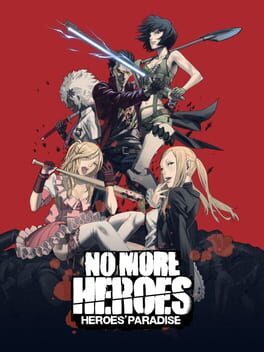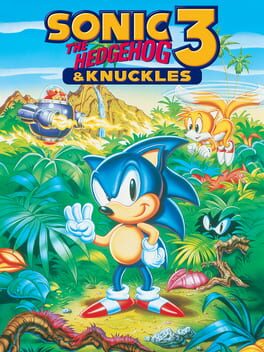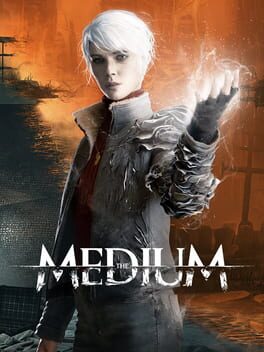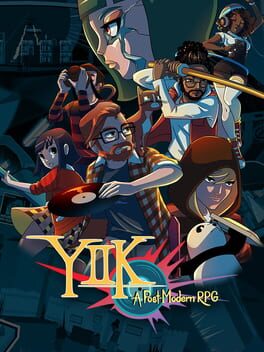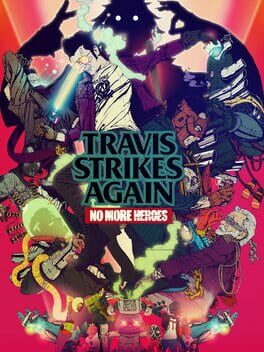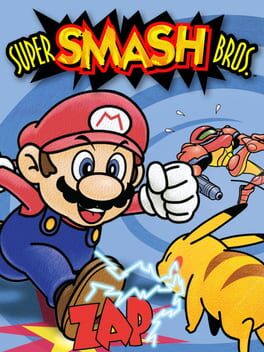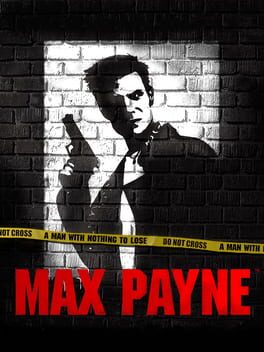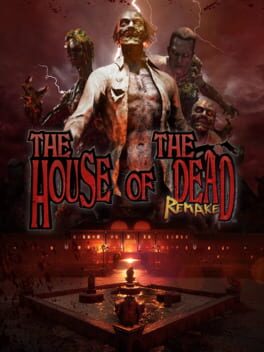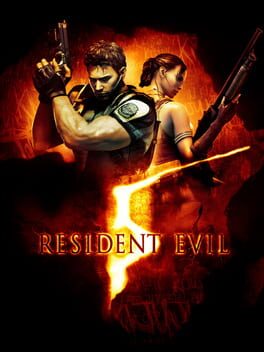95 Reviews liked by Ghenry
Wordle
2021
Metroid
1986
Metroid is an influential classic. While many would be content to vaguely pay respect to its influence before giving up due to a lack of map, this does not truly pay respect to what Metroid attempted and accomplished. Metroid is not notable for just being the first Metroid game or the first half of "Metroidvainia"; it was an exercise in atmosphere and featured a novel approach to progression.
At the start of the game Samus is dropped into a bleak alien world with only 30 health and a short-range blaster; no bright blue skies or adventurous tunes to start off the game. A played used to linear side scrollers that progress left to right will be punished by a gap too small to walk through. The real solution is to head left of the start to find the morph ball. Samus must not only find new weapons like Link but must also unlock her own controls.
After this moment, the player is set loose in Brinstar with most of it being explorable. Unlike future games which keep a longer and more rigid item path Metroid has only 4 mandatory items in order: Morph Ball, Missiles, Bombs, and the Ice Beam. Plus, the killing of Kraid and Ridley. Everything else is optional and often has multiple ways to access it. Killing Ridley before Kraid (a move often reserved for hidden sequence breaks intentional or not in later games) is easily done here. This offers players a degree of freedom unseen in most of the genre since; a design choice often lamented for creating a feeling of "where do I go?" A misplaced judgement as once you get the bombs you can really go anywhere.
Probably the most contentious aspect of Metroid is the lack of a map. A choice made even worse by the dizzying maze of copy paste rooms. Someone playing without a guide or insane memory would find it easy to get lost within the cavernous depths, but again even this critique misses the point. Samus is exploring a hostile alien world she does not know; the player's confusion is Samus's confusion. The only true way to mitigate this is to draw your own map, something Samus would have to do herself. By forcing the player to draw a map they made to connect with Samus more; your own custom mapmaking skills are the same as Samus's. In Super Metroid everyone will have the same map. In Metroid, the players map can as detailed, as artistic, or as technical as they want. While the idea of forcing a player to use an external control method to draw a map may seem counter intuitive, a player cannot know to do so and miss out on a key part of the game. I do not see how Metroid could have replicated the same experience short of including MS paint within the game itself.
Due to the lack of graphical prowess of the NES Metroid adopts the surreal art design many NES games also adopted. Caves have random metal pipes in them and platforms float in an empty void. Upper Brinstar has strange green brick (?), pipes, and odd vertical structures. Missile and E-Tanks sit on metal poles in random locations. Unlike the upgrades which are hidden in Chozo rooms locked behind missile doors. Norfair is a silver lava base, while Kraid and Ridley live in mechanical hideouts color coded to the boss itself. Ridley has strange purple cages Samus can walk through to avoid enemies. Kraid even puts his face right before his boss door. The game is colorful, but the constant black backgrounds make everything seem darker than it is, while Samus and the lava/acid below seem to glow in comparison.
The non-linear design is the most obvious innovation to the console gaming market, but Metroid along with Zelda also sought to include rpg mechanics to flesh out the game. In a classic platformer like Super Mario Bros powerups serve the same purpose as a powerup in a classic arcade game like Pac-Man, to give the player a temporary buff that while helpful is not necessary to beat the game. Zelda and Metroid instead adopt permanent upgrades and items from RPGs, but radically altered to fit the focus on exploration and combat rather than simple number grinding. Link gains items from exploring dungeons and gets more health by beating bosses. Metroid takes it one step further by cutting shop and inventory mechanics all together. Every upgrade Samus gets is permanently equipped there is no need to pause the game and replace the bombs with the high jump boots as there is in Zelda. Samus also must unlock control options outside of weapons. She cannot crouch naturally and must find the upgrade, and to unlike Mario or Megaman where jump height is based purely on button press length, Samus must unlock her higher jump. Metroid also features far more stat boosting upgrades with missile and health expansions littered everywhere often hidden behind bombable walls.
The only non-permanent upgrades are the 3 beam ones: the long, ice, and wave beams. Once a beam is gathered it simply overwrites the previous one. This will also cause the previous beam to respawn in the chozo statue it was found. The long beam simply makes Samus's base power beam bullets extend to the edges of the screen. The ice beam sacrifices power for utility. Giving Samus the ability to use enemies as platforms allowing her to avoid getting the hi jump boots. The wave beam gives Samus a substantial power boost while also letting her fire through walls. On the surface this system seems great as it allows players to choose what items they get and how they want to play the game, while also stopping one beam from being useless. However, this system is ruined by the fact the ice beam is mandatory to beat Tourian. Meaning that no matter the previous item collection or play style every player must backtrack to Brinstar or Norfair to get the ice beam.
Since Metroid's main is goal is not technically item progression but rather killing bosses the design of these bosses is extra important. Bosses in this game serve less as challenges of the player's skill but instead as roadblocks to ensure you have gathered enough missiles and E tanks. Both Kraid and Ridley are scarcely bigger then Samus and both just waddle around and shoot out projectiles to jump over. You can either waste time dodging and shooting or just stand in front of the boss and tank hits. These threatening alien creatures end up being little more than red doors which take more missiles to open. The only other aspect of note is that killing each boss expands Samus's missile count by a substantial amount compared to the measly 5+ missile tanks offer. Mother Brain herself is interesting at first. Being a giant brain, she has no method of attack other than hiding behind Metroid’s and a security system, a clever take on how a brain must use a body to defend itself. In implementation, however, the boss fight ends up like every other in the game. Stand on a platform and endlessly fire missiles, and you can either dodge the slow-moving projectiles or simply tank the hits if you have gathered enough E-tanks.
Since missile tanks and E tanks are so essential to find it is important that they are cleverly hidden, but most are sitting out in the open behind random bombable walls. This, along with the entrance to Ridley, is often cited as a near impossible way to find upgrades, but the truth is copy pasted rooms make this task way easier than it seems. Since many rooms are just copy pasted bombable blocks are often in the same locations meaning once you find them once you simply must bomb the same locations in each room. As a funny side effect many rooms have bombable blocks that lead nowhere as the room was simply copied from an area that did have a secret.
The most damning feature of Metroid is that it simply loses its atmosphere very quickly. The first moments of the game when Samus has only 30 health are very tense with even small missteps ending in death, but by the game a few E tanks are collected Samus can tank though most enemies. With the screw attack Samus can just jump through every threat while getting health drops to boot. I only died 3 times in the whole game: once at the start and two times to Mother Brain. Death works differently in Metroid then its sequels. In every following 2D Metroid you are placed back at the exact point you saved. If you travel to Norfair, save, get an E-tank, and die you will respawn at that save point without the E-tank. In Metroid your items are saved upon death but you are forced to restart at Brinstar (or the sector elevator if you use a password). In sacrificing distance for progress you will have to back track back where you were to re fight any bosses or go back to exploring; a huge pace breaker. Most of the game can simply be limped through. The once bleak and confusing maze of rooms is rendered a dull series of mapped out corridors as you blaze to each boss and bomb the same few walls for secrets.
Smaller problems such as the inability to duck and fire, a design flaw which makes the relatively harmless spikey wall climbers far more annoying than they should be, and the inaccurate, floaty jump only compound this issue.
All the issues combine to make a game less than the sum of its parts. For all Metroid does well it lacks the definite theme and design ethos that would define its sequels. Despite all its flaws Metroid still has interesting elements that can be picked up by modern game designers. Metroid is more than just a musty old game with no map that birthed super, it is a unique and alien experience something the flaws can never truly ruin.
At the start of the game Samus is dropped into a bleak alien world with only 30 health and a short-range blaster; no bright blue skies or adventurous tunes to start off the game. A played used to linear side scrollers that progress left to right will be punished by a gap too small to walk through. The real solution is to head left of the start to find the morph ball. Samus must not only find new weapons like Link but must also unlock her own controls.
After this moment, the player is set loose in Brinstar with most of it being explorable. Unlike future games which keep a longer and more rigid item path Metroid has only 4 mandatory items in order: Morph Ball, Missiles, Bombs, and the Ice Beam. Plus, the killing of Kraid and Ridley. Everything else is optional and often has multiple ways to access it. Killing Ridley before Kraid (a move often reserved for hidden sequence breaks intentional or not in later games) is easily done here. This offers players a degree of freedom unseen in most of the genre since; a design choice often lamented for creating a feeling of "where do I go?" A misplaced judgement as once you get the bombs you can really go anywhere.
Probably the most contentious aspect of Metroid is the lack of a map. A choice made even worse by the dizzying maze of copy paste rooms. Someone playing without a guide or insane memory would find it easy to get lost within the cavernous depths, but again even this critique misses the point. Samus is exploring a hostile alien world she does not know; the player's confusion is Samus's confusion. The only true way to mitigate this is to draw your own map, something Samus would have to do herself. By forcing the player to draw a map they made to connect with Samus more; your own custom mapmaking skills are the same as Samus's. In Super Metroid everyone will have the same map. In Metroid, the players map can as detailed, as artistic, or as technical as they want. While the idea of forcing a player to use an external control method to draw a map may seem counter intuitive, a player cannot know to do so and miss out on a key part of the game. I do not see how Metroid could have replicated the same experience short of including MS paint within the game itself.
Due to the lack of graphical prowess of the NES Metroid adopts the surreal art design many NES games also adopted. Caves have random metal pipes in them and platforms float in an empty void. Upper Brinstar has strange green brick (?), pipes, and odd vertical structures. Missile and E-Tanks sit on metal poles in random locations. Unlike the upgrades which are hidden in Chozo rooms locked behind missile doors. Norfair is a silver lava base, while Kraid and Ridley live in mechanical hideouts color coded to the boss itself. Ridley has strange purple cages Samus can walk through to avoid enemies. Kraid even puts his face right before his boss door. The game is colorful, but the constant black backgrounds make everything seem darker than it is, while Samus and the lava/acid below seem to glow in comparison.
The non-linear design is the most obvious innovation to the console gaming market, but Metroid along with Zelda also sought to include rpg mechanics to flesh out the game. In a classic platformer like Super Mario Bros powerups serve the same purpose as a powerup in a classic arcade game like Pac-Man, to give the player a temporary buff that while helpful is not necessary to beat the game. Zelda and Metroid instead adopt permanent upgrades and items from RPGs, but radically altered to fit the focus on exploration and combat rather than simple number grinding. Link gains items from exploring dungeons and gets more health by beating bosses. Metroid takes it one step further by cutting shop and inventory mechanics all together. Every upgrade Samus gets is permanently equipped there is no need to pause the game and replace the bombs with the high jump boots as there is in Zelda. Samus also must unlock control options outside of weapons. She cannot crouch naturally and must find the upgrade, and to unlike Mario or Megaman where jump height is based purely on button press length, Samus must unlock her higher jump. Metroid also features far more stat boosting upgrades with missile and health expansions littered everywhere often hidden behind bombable walls.
The only non-permanent upgrades are the 3 beam ones: the long, ice, and wave beams. Once a beam is gathered it simply overwrites the previous one. This will also cause the previous beam to respawn in the chozo statue it was found. The long beam simply makes Samus's base power beam bullets extend to the edges of the screen. The ice beam sacrifices power for utility. Giving Samus the ability to use enemies as platforms allowing her to avoid getting the hi jump boots. The wave beam gives Samus a substantial power boost while also letting her fire through walls. On the surface this system seems great as it allows players to choose what items they get and how they want to play the game, while also stopping one beam from being useless. However, this system is ruined by the fact the ice beam is mandatory to beat Tourian. Meaning that no matter the previous item collection or play style every player must backtrack to Brinstar or Norfair to get the ice beam.
Since Metroid's main is goal is not technically item progression but rather killing bosses the design of these bosses is extra important. Bosses in this game serve less as challenges of the player's skill but instead as roadblocks to ensure you have gathered enough missiles and E tanks. Both Kraid and Ridley are scarcely bigger then Samus and both just waddle around and shoot out projectiles to jump over. You can either waste time dodging and shooting or just stand in front of the boss and tank hits. These threatening alien creatures end up being little more than red doors which take more missiles to open. The only other aspect of note is that killing each boss expands Samus's missile count by a substantial amount compared to the measly 5+ missile tanks offer. Mother Brain herself is interesting at first. Being a giant brain, she has no method of attack other than hiding behind Metroid’s and a security system, a clever take on how a brain must use a body to defend itself. In implementation, however, the boss fight ends up like every other in the game. Stand on a platform and endlessly fire missiles, and you can either dodge the slow-moving projectiles or simply tank the hits if you have gathered enough E-tanks.
Since missile tanks and E tanks are so essential to find it is important that they are cleverly hidden, but most are sitting out in the open behind random bombable walls. This, along with the entrance to Ridley, is often cited as a near impossible way to find upgrades, but the truth is copy pasted rooms make this task way easier than it seems. Since many rooms are just copy pasted bombable blocks are often in the same locations meaning once you find them once you simply must bomb the same locations in each room. As a funny side effect many rooms have bombable blocks that lead nowhere as the room was simply copied from an area that did have a secret.
The most damning feature of Metroid is that it simply loses its atmosphere very quickly. The first moments of the game when Samus has only 30 health are very tense with even small missteps ending in death, but by the game a few E tanks are collected Samus can tank though most enemies. With the screw attack Samus can just jump through every threat while getting health drops to boot. I only died 3 times in the whole game: once at the start and two times to Mother Brain. Death works differently in Metroid then its sequels. In every following 2D Metroid you are placed back at the exact point you saved. If you travel to Norfair, save, get an E-tank, and die you will respawn at that save point without the E-tank. In Metroid your items are saved upon death but you are forced to restart at Brinstar (or the sector elevator if you use a password). In sacrificing distance for progress you will have to back track back where you were to re fight any bosses or go back to exploring; a huge pace breaker. Most of the game can simply be limped through. The once bleak and confusing maze of rooms is rendered a dull series of mapped out corridors as you blaze to each boss and bomb the same few walls for secrets.
Smaller problems such as the inability to duck and fire, a design flaw which makes the relatively harmless spikey wall climbers far more annoying than they should be, and the inaccurate, floaty jump only compound this issue.
All the issues combine to make a game less than the sum of its parts. For all Metroid does well it lacks the definite theme and design ethos that would define its sequels. Despite all its flaws Metroid still has interesting elements that can be picked up by modern game designers. Metroid is more than just a musty old game with no map that birthed super, it is a unique and alien experience something the flaws can never truly ruin.
The Medium
2021
I had to see this one with my own two eyes for some twisted and self hurting reason, and boy was everyone right about how baffling and grueling of a self absorbed mess this one is. To me, YIIK represents the apex of the indie scene's obssession with the egocentric tortured artist narrative that has been the go-to window dressing for many of the critical darlings of the last decade, mostly due to how badly it fails on the execution of said concept.
Andrew Allanson makes his case for Alex's incredible lack of charisma and likeability by implying that those were intented attributes deliberately written to present an unlikely protagonist that defies the expectations of videogame conventions and serves to tell a "meaningful and thought provoking" narrative, but I do have to question if Andrew understands that you can write unredeemable pieces of shit and still have them be compelling people to follow, not unlike the characters from the inumerous prestigious novels and movies he so eagerly name drops as influences. The voice behind Alex's obnoxious and verbose inner thoughts and social interactions permeates most of YIIK's world and people, bloating the whole experience with an onslaught of solipsistic musings that would make your teen self cringe and inner world exposition dumps that would make Kojima blush, and a group of characters lacking in so much chemistry and entertaining banter that fill the game's dead air with loud meaningless conversations that made me appreciate how much of an art what Persona does is.
Tying it all up, you have one of the most unpleasant combat systems I have ever had the displeasure of experiencing in an rpg. A third of the way through I had to turn on Story Mode and Assist Mode while fast forwarding as much as I could, and I shudder to think of the people who subjected themselves to the rest of the game without resorting to any of those settings. There are design choices made here where I struggle to believe that someone made them without deliberately trying to make this combat system a living hell to wrestle with for 20 hours. Andrew infamously stated that if people aren't able to appreciate his game, then "games aren't art, but toys for children", an idea that I find very insincere when he himself has brushed aside the strengths of the medium as mere tools in service of his literary interests and fails to recognize the gameplay value of the many games he apes from and that already disprove his perception of the audience.
I have seen comparisons made between YIIK and The Room, and while YIIK's team has immensely more talent than whatever Tommy Wiseau has, I do see where that's coming from. You aren't so much in it to experience the art presented to you, as much as you are to see the psychosis of the artist behind it, and YIIK does have its poignant and head turning moments that reach Pathologic levels of antagonism towards the player that reveal some kind of accidental genius behind its aggresively mediocre facade. Not only does the world of YIIK unironically revolve around Alex by the end of the game, he implicates you in his self importance and passes onto you his responsibilities and obligations to be a better person, and I find the audacity and nerve to do that...kinda brilliant??, more so deserving of the pretentious "Postmodern RPG" moniker than the Earthbound/Mother 3 gimped 4th wall breaks or the doubt seered into me each time the loading screen tip "videogames are not a waste of time" popped up.
And dont get me wrong, thinking that YIIK is some misunderstood masterpiece of game design or secretely a arthouse cult classic in the making. Judging by Andrew's defensive posture when talking about the game's reception and the passive aggressiveness he slides into the game's updates, much of the artistic merit that can be inferred from YIIK is most likely just a pure casualty of someone trying to aspire to his influences and falling way short of the mark, and suggesting that most of it was intentional would be implying that someone could have the talent to consciously write and design as badly as YIIK was. But Andrew made art here, not the kind of art he wanted to make, but art nonetheless, and I do find more value in this relentlessly life draining game than most indie artsy fartsy games out there. I play YIIK and I see a sincere attempt at creating something unique and different, scrambling ideas from every piece of fiction the creator cherishes and throwing it at the wall to see what sticks, not having the self awareness to realize its own mediocrity or how misplaced and misguised many of those ideas might be, and I can definitely sympathize and relate to that.
PS: The Iwata "tribute" is the most unintentionally hilarious bit in the whole game. You have the power of videogames to make anything you want, and you put the man in a fucking tombstone.
Andrew Allanson makes his case for Alex's incredible lack of charisma and likeability by implying that those were intented attributes deliberately written to present an unlikely protagonist that defies the expectations of videogame conventions and serves to tell a "meaningful and thought provoking" narrative, but I do have to question if Andrew understands that you can write unredeemable pieces of shit and still have them be compelling people to follow, not unlike the characters from the inumerous prestigious novels and movies he so eagerly name drops as influences. The voice behind Alex's obnoxious and verbose inner thoughts and social interactions permeates most of YIIK's world and people, bloating the whole experience with an onslaught of solipsistic musings that would make your teen self cringe and inner world exposition dumps that would make Kojima blush, and a group of characters lacking in so much chemistry and entertaining banter that fill the game's dead air with loud meaningless conversations that made me appreciate how much of an art what Persona does is.
Tying it all up, you have one of the most unpleasant combat systems I have ever had the displeasure of experiencing in an rpg. A third of the way through I had to turn on Story Mode and Assist Mode while fast forwarding as much as I could, and I shudder to think of the people who subjected themselves to the rest of the game without resorting to any of those settings. There are design choices made here where I struggle to believe that someone made them without deliberately trying to make this combat system a living hell to wrestle with for 20 hours. Andrew infamously stated that if people aren't able to appreciate his game, then "games aren't art, but toys for children", an idea that I find very insincere when he himself has brushed aside the strengths of the medium as mere tools in service of his literary interests and fails to recognize the gameplay value of the many games he apes from and that already disprove his perception of the audience.
I have seen comparisons made between YIIK and The Room, and while YIIK's team has immensely more talent than whatever Tommy Wiseau has, I do see where that's coming from. You aren't so much in it to experience the art presented to you, as much as you are to see the psychosis of the artist behind it, and YIIK does have its poignant and head turning moments that reach Pathologic levels of antagonism towards the player that reveal some kind of accidental genius behind its aggresively mediocre facade. Not only does the world of YIIK unironically revolve around Alex by the end of the game, he implicates you in his self importance and passes onto you his responsibilities and obligations to be a better person, and I find the audacity and nerve to do that...kinda brilliant??, more so deserving of the pretentious "Postmodern RPG" moniker than the Earthbound/Mother 3 gimped 4th wall breaks or the doubt seered into me each time the loading screen tip "videogames are not a waste of time" popped up.
And dont get me wrong, thinking that YIIK is some misunderstood masterpiece of game design or secretely a arthouse cult classic in the making. Judging by Andrew's defensive posture when talking about the game's reception and the passive aggressiveness he slides into the game's updates, much of the artistic merit that can be inferred from YIIK is most likely just a pure casualty of someone trying to aspire to his influences and falling way short of the mark, and suggesting that most of it was intentional would be implying that someone could have the talent to consciously write and design as badly as YIIK was. But Andrew made art here, not the kind of art he wanted to make, but art nonetheless, and I do find more value in this relentlessly life draining game than most indie artsy fartsy games out there. I play YIIK and I see a sincere attempt at creating something unique and different, scrambling ideas from every piece of fiction the creator cherishes and throwing it at the wall to see what sticks, not having the self awareness to realize its own mediocrity or how misplaced and misguised many of those ideas might be, and I can definitely sympathize and relate to that.
PS: The Iwata "tribute" is the most unintentionally hilarious bit in the whole game. You have the power of videogames to make anything you want, and you put the man in a fucking tombstone.
Super Smash Bros.
1999
Asura's Wrath
2012
Asura's Wrath being the laughing stock of excessive QTE use during the 7th gen has become a bit of an unfair reputation, considering how little credit it tends to get for how successfully it actually manages to pull it off. Described as an "interactive anime" by the developers themselves, it is clear that the people behind this production knew what they were doing, using all the classic tropes and cliches that have turned shounen into such a successful venue for guys being dudes.
So well executed in fact, that soon you forget that you are for the most part just pressing button prompts as you watch long ass cutscenes of big muscle guy punching another big muscle guy. There is definitely an art to making visceral rage and violence this engaging and purposeful, emotions that the japanese have managed to perfect and capitalize on with animation for decades now, and Asura's Wrath pays tribute to that legacy in a grand display of revenge melodrama between gods that puts God of War to shame.
It's an escalation of every increasingly insurmountable odds that Asura inevitably bursts through with his fists, fury and will alone, surprassing the greatests of Platinum Games finales, and it's amazing what a few buttons can do to elevate a story that we have seen told countless times before to new heights of catharsis. The final boss (which is locked behind payed dlc, a decision that sits at the pantheon of bad Capcom ideas) gets his shit kicked in so hard that by that point you welcome those QTEs with open arms.
The bittersweet ending note of Asura's Wrath is wondering how much more amazing it would have been were it a real ass videogame.
So well executed in fact, that soon you forget that you are for the most part just pressing button prompts as you watch long ass cutscenes of big muscle guy punching another big muscle guy. There is definitely an art to making visceral rage and violence this engaging and purposeful, emotions that the japanese have managed to perfect and capitalize on with animation for decades now, and Asura's Wrath pays tribute to that legacy in a grand display of revenge melodrama between gods that puts God of War to shame.
It's an escalation of every increasingly insurmountable odds that Asura inevitably bursts through with his fists, fury and will alone, surprassing the greatests of Platinum Games finales, and it's amazing what a few buttons can do to elevate a story that we have seen told countless times before to new heights of catharsis. The final boss (which is locked behind payed dlc, a decision that sits at the pantheon of bad Capcom ideas) gets his shit kicked in so hard that by that point you welcome those QTEs with open arms.
The bittersweet ending note of Asura's Wrath is wondering how much more amazing it would have been were it a real ass videogame.
Max Payne
2001
Max Payne is a shooter like no other, while many games have iterated on the bullet time concept Max Payne stands alone due to its stressful disempowerment curve and meta satirical noir narrative. With the exception of its own sequels the closest game gameplay wise is Remedy's own Control.
Max Payne wears its influences on its sleeve in typical Remedy style. The cutscenes are told in a comic book format, that while not particularly well drawn or paneled, pay tribute the hard boiled comics of Frank Miller, Howard Chaykin, and Matt Wagner. Wry references to comic book's older brother, comic strips, and its son cartoon violence add levity to the story. TVs throughout the world play strange parodies of soaps and Twin Peaks. Max Payne is an utterly serious character trapped in an utterly senseless world, which like Grant Morrison's Animal Man mines its tragedy from the innate existential horror of fiction. Max is trapped both story wise in a conspiracy far outside of his control and literally, in a corny noir game with purple prose. "I was in a computer game. Funny as hell. It was the most horrible thing I could think of." Sam Lake's signature smirk gives the character an obscene amount of charm.
Gameplay wise Max Payne makes a sharp break from most shooters. Rather then allowing the player to take a lot of damage while enemies can be downed easy, Max Payne opts to make the main character very fragile with one shotgun blast able to instant kill Max at full health. The only advantage Max has is slow mo, a dodge roll with iframes, and quick saves. For some odd reason the ability to activate bullet time without dodging is locked behind menu rebinds but this is a quick issue to fix. This disempowerment coupled with the ability quick save anywhere gives the game more a feeling like modern indie shooters like Hotline Miami or Superhot where death comes fast and resets come faster. Movement is key to Max Payne if you aren't constantly strafing, dodging, or in bullet time you are dead. The level design includes many crooks and crannies for enemies to hide in which forces the player to be in a constant state of stress as any hidden enemy can near instantly kill the player.
Max Payne is a gritty game. One that delivers fast paced action and an over the top tragic story with a wry smile.
Max Payne wears its influences on its sleeve in typical Remedy style. The cutscenes are told in a comic book format, that while not particularly well drawn or paneled, pay tribute the hard boiled comics of Frank Miller, Howard Chaykin, and Matt Wagner. Wry references to comic book's older brother, comic strips, and its son cartoon violence add levity to the story. TVs throughout the world play strange parodies of soaps and Twin Peaks. Max Payne is an utterly serious character trapped in an utterly senseless world, which like Grant Morrison's Animal Man mines its tragedy from the innate existential horror of fiction. Max is trapped both story wise in a conspiracy far outside of his control and literally, in a corny noir game with purple prose. "I was in a computer game. Funny as hell. It was the most horrible thing I could think of." Sam Lake's signature smirk gives the character an obscene amount of charm.
Gameplay wise Max Payne makes a sharp break from most shooters. Rather then allowing the player to take a lot of damage while enemies can be downed easy, Max Payne opts to make the main character very fragile with one shotgun blast able to instant kill Max at full health. The only advantage Max has is slow mo, a dodge roll with iframes, and quick saves. For some odd reason the ability to activate bullet time without dodging is locked behind menu rebinds but this is a quick issue to fix. This disempowerment coupled with the ability quick save anywhere gives the game more a feeling like modern indie shooters like Hotline Miami or Superhot where death comes fast and resets come faster. Movement is key to Max Payne if you aren't constantly strafing, dodging, or in bullet time you are dead. The level design includes many crooks and crannies for enemies to hide in which forces the player to be in a constant state of stress as any hidden enemy can near instantly kill the player.
Max Payne is a gritty game. One that delivers fast paced action and an over the top tragic story with a wry smile.
Going to be succinct on this one. Controls are not great, something that needs to be perfect for a light gun game, the menus and UI scream “cheap cash-in”, and technical issues hamper what should have been an easy slam-dunk of a game. Zombie designs are pretty bland and lifeless (something that’s been an issue of the series since HOTD4; comparatively, look at the designs in 1, 2, and 3, which tow the line between “generic” and “immediately recognizable”.) Typos and sound balancing issues left and right leave an air of amateurism. The worst way to play an arcade classic. Never trust Forever Entertainment, folks!


